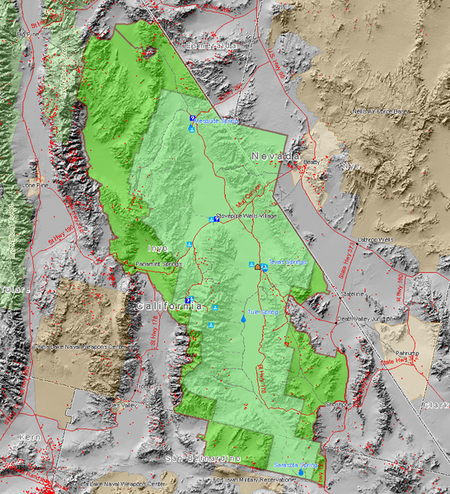At 2,219,789 acres (3,472 sq. mi.), Yellowstone National Park reigned for 122 years as the largest national park in the 48-state U.S. (Indeed, it was the biggest of all the national parks for more than a century.) Then, on October 31, 1994, the California Desert Protection Act redesignated Death Valley from National Monument to National Park, added about 1.3 million acres to the park’s holdings, and made Death Valley National Park the largest park in the coterminous states.
Death Valley was a large park from the very beginning. Responding to enthusiastic endorsements of park status for Death Valley, including high praise from Stephen Mather, President Herbert Hoover proclaimed Death Valley a National Monument on February 11, 1933. The original Monument encompassed 1,601,800 acres, an area almost as large as Everglades National Park. Two supplementary proclamations -- one in 1937 and another in 1952 (Devils Hole addition) -- increased the Monument's size to 2,067,793 acres. Thus, Death Valley had grown nearly as big as Yellowstone over half a century ago.
The California Desert Protection Act of 1994 took Death Valley over the top – way over the top – by adding approximately 1.3 million acres of contiguous “national park caliber” federal lands to the park (see map in accompanying photo) at the same time that it redesignated it from National Monument to National Park. Now encompassing over 3.3 million acres, 95% of which is federally designated wilderness, Death Valley is roughly half again the size of Yellowstone.




Comments
It's interesting that The California Desert Protection Act of 1994 not only resulted in Death Valley becoming the largest NPS unit in the coterminous states, it also added the 3rd largest unit in Mohave National Preserve. Reading about the long political battle to get that act passed made me appreciate these two areas even more.
My first visit to Death Valley years ago - a camping trip on a February weekend - coincided with rain in the low country and snow on the peaks. It was interesting to see the park under those conditions.